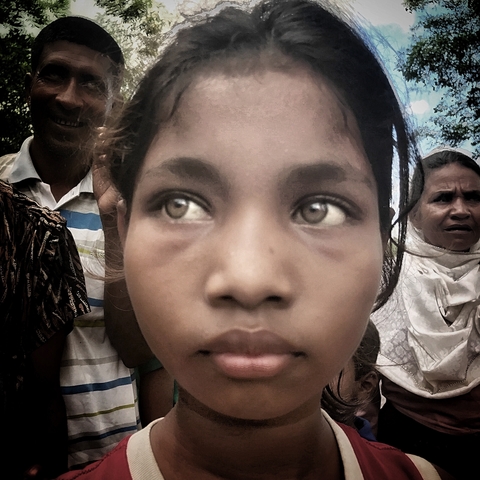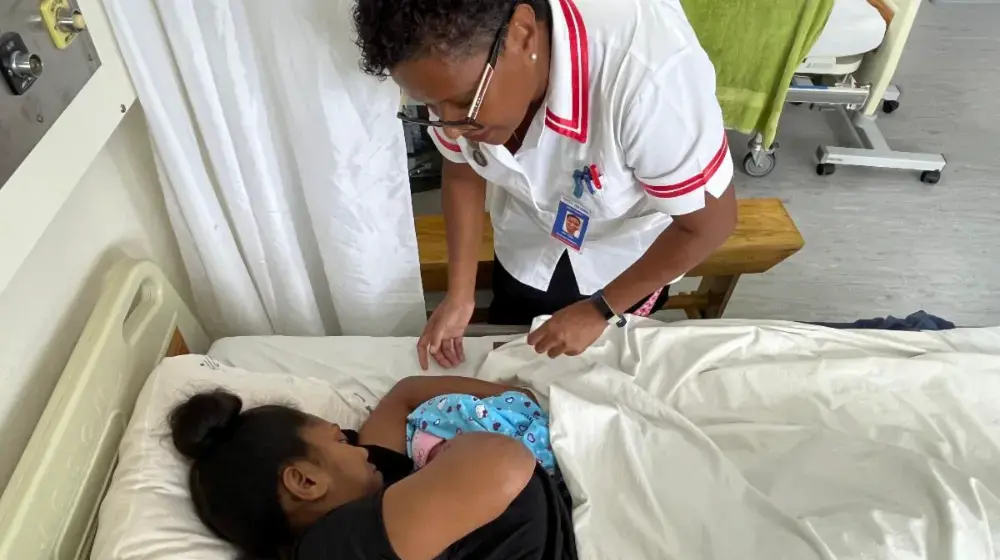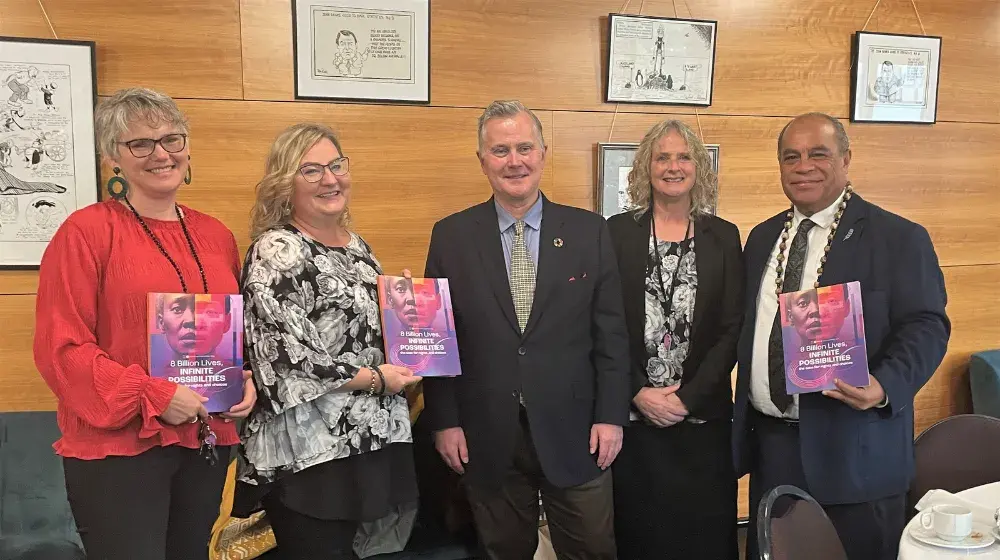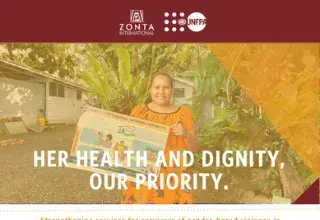Addressing the patterns of child marriage, early union and teen pregnancy in Southeast Asia: A matter of urgency
Governments, UN agencies and civil society partners strategise on steps needed to reverse current trends
BANGKOK, 12 April 2018 – In Southeast Asia, child marriage, early unions and teen pregnancy continue to rise in some countries and are not falling rapidly enough in others. These represent significant challenges to young persons’ rights and sustainable development that governments and civil society organisations are seeking to urgently address in partnership with UN agencies.
The regional offices of UNICEF and UNFPA organised a forum in Bangkok (April 4-5), with the support of UNESCO’s Regional Bureau for Education and the regional offices of IPPF and Plan International, bringing together government, UN and civil society representatives from 10 countries to discuss these issues, strategize on how to tackle them, and learn from best practices both within the region and beyond.
Different patterns, different strategies
While adolescent birth rates have declined globally, they have remained generally stagnant or even increased in Southeast Asia, with wide-ranging variations between countries. The average adolescent birth rate in the region is 47 births per 1000 females aged 15 to 19, higher than the average of 35 in South Asia and close to the global average of 50. The highest adolescent birth rates at the country level are seen in Lao PDR (94), Cambodia (57), Thailand (50), Indonesia (48) and Philippines (47). Despite declines in recent decades, the prevalence rates of child marriage and early union remain high in Southeast Asia. The percentage of women aged 20 to 24 who were married or in union before 18 ranges from 35.4 percent in Lao PDR to 11 percent in Viet Nam.
“With adolescents in Southeast Asia entering early marriages and unions for a range of reasons and in widely varying circumstances, initial research shows diverse patterns at play,” noted Björn Andersson, UNFPA Regional Director for Asia and the Pacific. “While there are some similarities to forms of child marriage seen elsewhere, such as in South Asia, there are significant differences that warrant studies, strategies and solutions specific to Southeast Asia.”
Traditional arranged child marriage, where one or both partners are minors under the age of 18, stems from cultural norms and tradition, much like those in South Asia. Self-decided marriage or unions, which include love marriage or cohabitation, are when adolescents and young people make their own decisions to live together. ‘Circumstantial’ marriage or union, with or without girls’ consent, is when marriage occurs to counter the social stigma associated with having a baby out of wedlock or to ‘resolve’ sexual activity, including violence or rape. A subset of child marriages may also include trafficking, where girls are sold or otherwise forcibly married off in environments often marked by poverty and violence.
Emergencies - which the Asia-Pacific region is at the highest risk of globally - only exacerbate existing vulnerabilities facing young girls. Decreased protection mechanisms, along with increased instability and pressure on families to cope, can all be drivers of child marriage and early union and, therefore, increased rates of adolescent pregnancy.
“A striking number of young girls become pregnant without having planned to – or without having had control of their pregnancy. When an adolescent girl becomes pregnant, her life changes forever. Her schooling often gets disrupted, or ends altogether; her prospects of a job dim; the health hazards due to complications from pregnancy and childbirth are huge – and often fatal,” explained Wivina Belmonte, UNICEF Deputy Regional Director, East Asia and the Pacific. “The issues are complex and challenging to address. Good solutions come from collaboration, co-creation, and adolescent-centered approaches.”

Image: UNFPA Timor-Leste/Ruth Carr
Understanding – and accepting – the facts of life and love
The Bangkok forum posed three basic questions: What are the key knowledge gaps and what additional research is needed to better understand what drives these patterns and interrelated factors? What strategies and interventions are needed to create an enabling environment for adolescents both married and unmarried? How can governments and UN agencies more effectively engage youth leadership, girls’ networks and adolescent advocacy groups in policy and programming?
“When it comes to research on early unions and teen pregnancy, we must understand what the data are telling us, accepting the facts as they are without shying away from the findings for sociocultural or political reasons,” said Nora Murat, Regional Director, IPPF-ESEAOR. “Adolescent sexuality is a reality that makes many governments and other stakeholders uncomfortable. But unless we understand the complexities, we will fail to make genuine progress in filling gaps in our knowledge, especially for 10 to 14-year-olds and unmarried girls and boys, and in addressing these challenges.”
A key example of how improved research and data on adolescent sexuality are informing policy change came from Viet Nam where studies over the past decade have clearly revealed that while adolescents are increasingly engaging in sexual activity, with corresponding levels of unintended pregnancy, there remain significant knowledge gaps about sex and sexuality that are impacting young persons’ abilities to make informed and responsible choices.
The Viet Nam data, along with evidence from other countries, underscore how crucial good quality comprehensive sexuality education is, a top recommendation that emerged from the forum. Age appropriate comprehensive sexuality education should commence in early primary school (at age 5), providing skills in communication, decision making, negotiation, gender equality and respect.
“Comprehensive sexuality education that goes well beyond biological reproduction is essential at an early age for girls and boys, both in and out of school, to ensure that young people are equipped with a solid foundation for life and love,” emphasized Maki Hayashikawa, Director (a.i.), UNESCO Bangkok. “Evidence globally clearly shows that providing CSE does not increase sexual activity, but rather empowers young persons to take charge of their own lives with healthier and happier outcomes. Abstinence-only approaches are not effective in delaying sexual initiation, reducing frequency of sex or reducing the number of sexual partners. CSE is core to addressing early unions and teen pregnancy.”
CSE forms a key pillar of Thailand’s relatively recent Prevention and Solution of Adolescent Pregnancy Problem Act, legislation aimed at addressing the country’s fast-rising teen pregnancy rate through the involvement of multiple ministries and civil society partners. The Thai Ministry of Public Health shared the opportunities that have been created by the Act, especially through enshrining the rights of young persons to sexual and reproductive health information and services, as well as consulting with young people themselves in drafting and implementing the legislation, setting a strong example for other countries in the region and globally.

Image: UNFPA Thailand
A genuine partnership with young persons
“Through training on life skills, self-defense and information on child protection and gender equality, young people have formed grassroots coalitions against child marriage,” said Senait Gebregziabher, Regional Director, Plan International. “To continue our progress towards making child marriage history, investment and commitment is required from all stakeholders.
Dina Chaerani, President, Youth Coalition for Girls in Indonesia and a panelist at the forum, further emphasized the importance of including youth at all levels of the decision-making process.
“At the end of the day, young people themselves must be at the heart of the solution. Work with us to mobilize movements for change. Only young people really know what information we ourselves need, and how to reach one another, including the best social media platforms. Governments must give us the chance to do all of this, not only in the planning and designing phase, but also in monitoring and evaluation. It sounds like a cliché but really, ‘Nothing for us without us’. If that happens, we will collectively succeed.”
For more information or to arrange interviews, please contact:
UNFPA Asia-Pacific Regional Office: Roy Wadia - wadia@unfpa.org / Matthew Taylor - taylor@unfpa.org
UNICEF East Asia and Pacific Regional Office: Shima Islam - ssislam@unicef.org
UNESCO Regional Bureau for Education: Noel Boivin - nboivin@unesco.org
IPPF Asia-Pacific: Nerida Williams – newilliams@ippf.org
Plan International: Nattasuda Anusonadisai - Nattasuda.Anusonadisai@plan-international.org
Download the fully updated International Technical Guidance on Sexuality Education at http://unesdoc.unesco.org/images/0026/002607/260770e.pdf
Download materials related to the UNFPA-UNICEF Global Programme to Accelerate Action to End Child Marriage at https://www.unicef.org/protection/57929_92681.html
Read about Plan International’s work to end child marriage in Asia-Pacific at https://plan-international.org/asia/child-marriage-asia#

Image: UNFPA Bangladesh/Veronica Pedrosa




